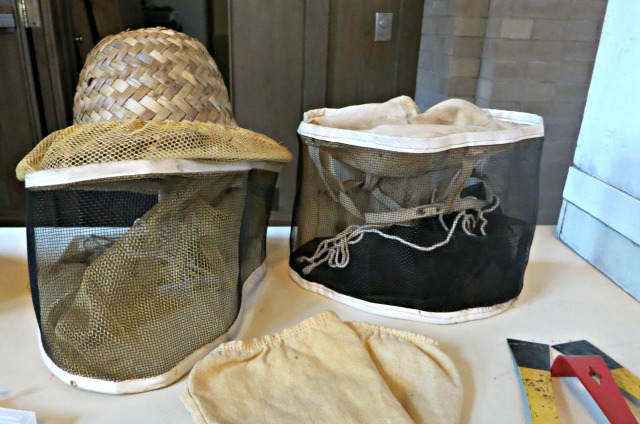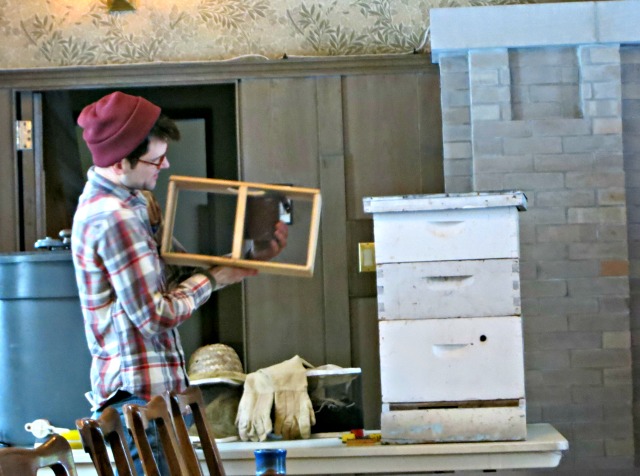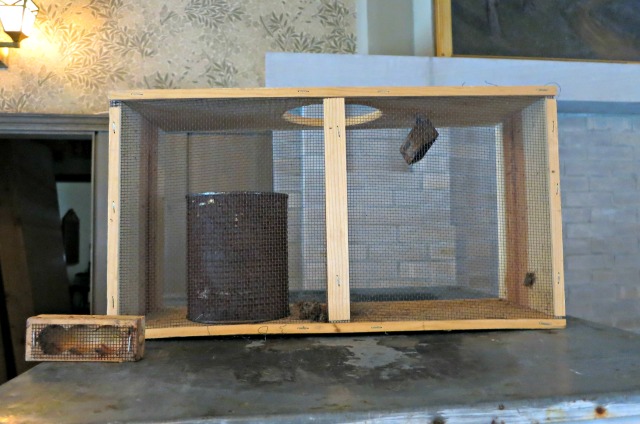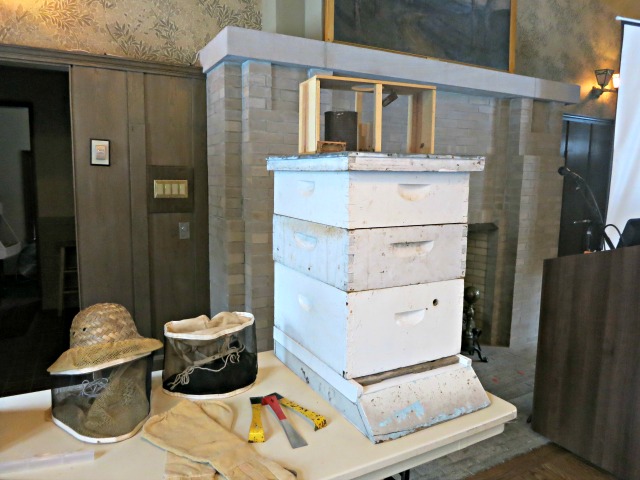Want Some Honey, Honey? Take Beekeeping Classes With The Chicago Honey Co-op
By Melissa Wiley in Food on Feb 6, 2014 8:15PM
Old-school alchemists almost mythically vested with the power to transform nectar into honey, honey bees have become barometers of a healthy ecosystem. The spread of colony collapse disorder is now shorthand for the dissolution of diversity in an agricultural complex rappelling toward monoculture blight. But urban beekeeping is gaining ground, helping to sweeten life lived far from the fat of the land and right some industrial wrongs.
Bees may be dying—and overtaxed as pollinators, shipped wholesale to California to keep the almond industry afloat and the like—but the Chicago Honey Co-op is thriving and offering classes so you too can take a dip in the honey pot.
More than friendly faces selling beeswax candles at Logan Square or Green City Market, its members support and sustain the efforts of backyard apiarists while continuing to welcome volunteers game for maintaining hives dotting downtown’s lushest rooftops.
Last Saturday, I attended a beginning beekeeping class and fast realized the Chicago Honey Co-op is, like some conceptions of divinity, best at helping those who first help themselves—meaning you’re well served by reading Honeybees and Beekeeping, A Year in the Life of an Apiary as the co-op recommends in advance to pick the experts’ brains and solicit practical advice to maximum advantage. And if you’re serious about becoming even the layest of lay apiarists, this is the time to get cracking. Sidewalks blanketed in white may lend the illusion that we’re still languishing in the depths of winter, but ideally you’ve already ordered your equipment and bees for the spring. If you're seeing a hive through the snowfall, it's also imperative that you check for life, honey, and pollen stores without delay.
Listening in on the veteran beekeepers’ persiflage during a coffee break, I couldn’t help but share their concern for the bees’ survival through what has been a long, hard winter by any sane person’s account. Sydney Barton, who enumerated many of the pests to plague home apiaries, aired her fear that large populations of local bees may soon perish from nosema, a form of dysentery resulting from bees’ inability to embark on “cleansing flights” to defecate outside the hive when the weather stays too cold for too long.
But the class, lasting from 10 a.m. to 3 p.m. at the Jane Addams Hull-House Museum in winter—and progressing to hands-on time at the co-op’s central apiary in spring—is essentially an exercise in optimism, because for all its extremes of climate and post-industrial blight, Chicago, you’re often reminded, remains one rich source of nectar. We’re also relatively fancy free in terms of beekeeping zoning ordinances.
“One thing you don’t have to worry about in a city with bees is nectar forage. March through December, there’s an endless supply,” said Michael Thompson, a co-op co-founder, who went on to explain that the organization seeks out post-industrial spaces for establishing new apiaries, largely because of their ample supply of white sweet clover, which furnishes local honey bees with abundant nectar along the most neglected railroad lines and vacant lots.
”The primary sources of nectar in Chicago, however, are linden and black locust trees,” Sydney Barton added. “There are literally millions of linden trees in Chicago, and linden honey is considered some of the best in the world.”
Lurie Gardens, she also noted, attracts its share of honey bees with fulsome growths of mint and sage. But beekeeping, a longtime volunteer confided during the potluck lunch, entails enough variables beyond your control never to risk becoming an exact science. Bees, she told us, have become a kind of pet for her, exerting as much emotional involvement as any dog or cat.
But bees, we all know, are no cuddle bugs. As a beekeeper, you also inevitably snuff out your share of life while conducting routine inspections, and you will get stung. “You have to treat the bees like a super-organism. You’re going to smash some and some are going to sting you on the back of your neck. But the bees themselves live for the super-organism, so it helps as a beekeeper to follow suit,” advised Ben Walker, an active member who also professionally removes swarms and makes his own mead. “You also can’t expect to harvest honey right away. It’s very possible you won’t harvest any for yourself the first year because you have to make sure the bees have enough honey to live off themselves for the winter before you take any for yourself.”
Leaving the class, I promised myself not to spin science into metaphor but failed by the time I reached the bus stop, perhaps because the art of beekeeping predates the pyramids and bees themselves have long since morphed into archetype. Walking in the snow wondering how many bees wouldn’t survive this cold Saturday, I couldn’t help but feel that, for possibly the most organized creatures to grace this planet, bees take a terrible shot in the dark. That the single flight of a virgin queen amid a horde of drones who die the moment they achieve orgasm is nature at her most histrionic. That the sting that kills the bee but issues no more than some swelling around my ankle isn’t quite fair considering our difference in size. And how much easier to buy a pot of honey at the grocery store than to invest ourselves personally in such a sticky battle for life and death, one that comes a little too close for comfort at times—because buying local honey does help re-balance industrial agriculture but only so much.
But then how beautiful too. To taste the honey wrought from clover growing flush against an abandoned train and be part of the mystery.
The next beginning beekeeping class takes place Saturday, Feb. 15, and you can register here.





